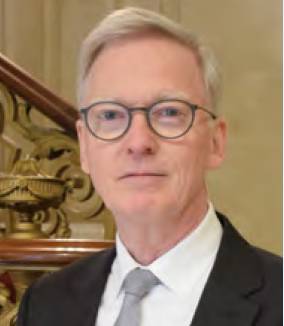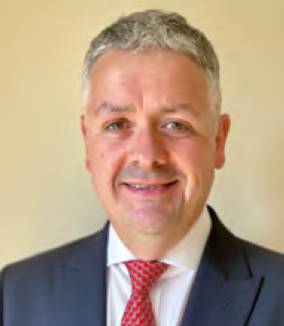Message from RAeS
Message from RAeS

Initially planned for launch in 2007, NASA, ESA and Arianespace recently jointly announced that they had selected 18 December 2021 as the formal targeted launch date for the NASA James Webb Space Telescope (JWST). Since 1996, ESA and NASA, along with the Canadian Space Agency, have collaborated on designing and constructing JWST, widely considered as a follow-up mission to the hugely successful Hubble Space Telescope (HST) launched in 1990 and still operational today. ESA is providing the launch as part of its contribution to the NASA-led mission and in exchange allowing scientists from ESA Member States, including the UK, a minimum share of 15% of the total observing time. ESA will also provide 15 astronomers at the JWST Science and Operations Center (SOC) in Baltimore for the duration of the mission.
Concerning UK involvement in preparing the in-space communications infrastructure in support of future human spaceflight missions to the Moon, David Parker FRAeS, ESA Director of Human and Robotic Exploration, signed a Commercial Lunar Mission Support Services contract with Phil Brownnett, Managing Director of Surrey Satellite Technology Ltd (SSTL) at the Royal Society, London, in the presence of Amanda Solloway, UK Science Minister, Josef Aschbacher, ESA Director General, Paul Bate, the new Chief Executive of the UK Space Agency and SSTL’s Executive Chairman, Sir Martin Sweeting FRAeS. Through this contract, ESA becomes the anchor for communications services from Lunar Pathfinder, which will be the first dedicated lunar communications relay spacecraft when it launches in 2024. Lunar Pathfinder is a first step towards ESA’s ambitious Moonlight vision to create a network of lunar communications and data relay satellites serving users worldwide.
Regarding the UK’s now significant interest in the subject, the University of Warwick has launched the Centre for Space Domain Awareness to create a critical mass of research that tackles the growing threats to technology in Earth orbit. From the space debris that could collide with orbiting satellites, to the solar winds that could interfere with their electronics, the researchers at the new Centre will pioneer new work to understand and characterise the near-Earth environment to support scientific, commercial, governmental and military applications. Supported by the DSTL and UKSA, this new centre will be the first research centre in the UK dedicated to investigating the sustainable use of the near-Earth environment. The launch of the Centre was announced on 8 September at the recent annual meeting of GNOSIS (The Global Network on Sustainability in Space), an STFC network of scientists and representatives from industry that aims to raise awareness of the problem of space debris and of space sustainability.
On 10 September, I was pleased to have participated at a special meeting of the ‘leaders’ of the Society Specialist Groups, at which Sir Brian Burridge presented the new proposal to refine the Society’s conference programme. This is particularly relevant given the important role our conferences play in enhancing Society knowledge and engaging with our members, as well as contributing to Society finances, particularly in the current situation and with a growth in potential external competition. It was agreed that we must together ensure that the proposed five major annual conferences provide both the correct degree of knowledge and a sufficient financial return from a wide and diverse audience and our ever-generous sponsors.
As I write, I very much look forward to speaking at the 2021 Young Persons Conference ‘NextGeneration Opportunities in Space’ online on 17 September, generously sponsored by Telespazio UK. Such Society events are critical to inspire young people to enter the space domain, in all the relevant areas, as technicians, engineers, academics, lawyers, managers etc and I praise the hard work and engagement of all those involved. Also on my list is online attendance at the Gerhard Sedlmayr Named Lecture organised by the Hamburg Branch on 28 September, and participation at the biannual UK Space Conference 2021, from the 27 to 29 September (this time online). I also look forward to participating at the 2021 Branches Conference on 8 and 9 October to learn more about the great success of the many online events now organised by the various Branches around the world and to discuss the ongoing questions related to diversity and inclusion. I have also been invited to speak at a Westminster Forum Seminar ‘Priorities for the UK space sector’ taking place on 14 October and, very timely, the UK’s National Space Strategy was published on 27 September.
David Edwards
 September saw the Royal Aeronautical Society’s Young Persons Conference, Next-Generation Opportunities in Space, building on a main topic of interest from the recent YPC Survey. The programme gave an insight into the future of the space industry and the diverse range of career options for those starting out, with speakers sharing their stories and experiences demonstrating enthusiasm and real dedication to the sector. We are very grateful to Telespazio UK for its support.
September saw the Royal Aeronautical Society’s Young Persons Conference, Next-Generation Opportunities in Space, building on a main topic of interest from the recent YPC Survey. The programme gave an insight into the future of the space industry and the diverse range of career options for those starting out, with speakers sharing their stories and experiences demonstrating enthusiasm and real dedication to the sector. We are very grateful to Telespazio UK for its support.